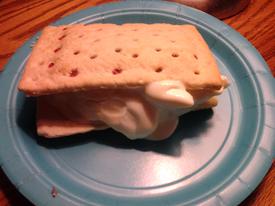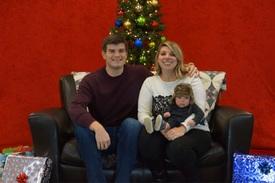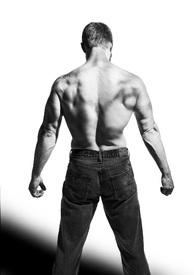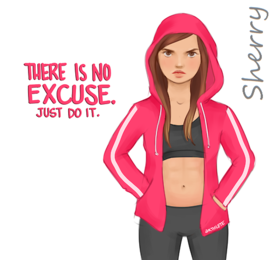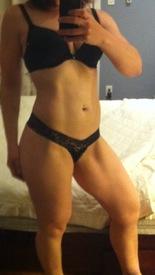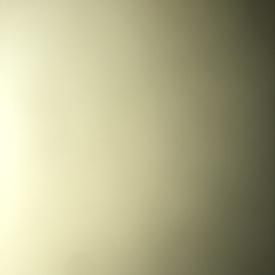So what's a real cut/bulk cycle look like?
Options
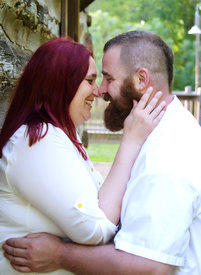
UsedToBeHusky
Posts: 15,227 Member
So... I've been "newb-ing" my way through this, and I think I have gone as far as my bumbling around is going to take me. I don't think I'm going to get any more beginner gains from lifting, but my body fat is still too high for a legitimate bulk, not that I would even know how to do one.
So what would a legitimate cut/bulk cycle look like?
I realize I'm not giving you enough information about my caloric needs. I'm mainly just looking for ideas on what the diet should look like.
So what would a legitimate cut/bulk cycle look like?
I realize I'm not giving you enough information about my caloric needs. I'm mainly just looking for ideas on what the diet should look like.
0
Replies
-
In, because I want to know too.0
-
tagging in.0
-
Can you clarify what you mean by "what the diet should look like"? It might be because it's early but I'm not really sure what you're asking if you're not looking for specific caloric or macro numbers.0
-
Can you clarify what you mean by "what the diet should look like"? It might be because it's early but I'm not really sure what you're asking if you're not looking for specific caloric or macro numbers.
I mean foods. I'm trying to figure out how a cut is any different than what I'm doing now.0 -
To make the numbers clean. Lets take a 150 pound female with a 2000 calorie maintenance level.
Bulk Cycle:
Targets would look something like the below.
Calories: 2250 (a theoretical 1/2 pound weekly weight increase. Some might go slightly higher or lower depending on acceptable levels of fat gain)
Protein - 150 grams
Fat - 53
Carbs - The difference
For a male the standard recommendation is started bulking at 10% body fat and stop at around 15% (again give or take depending on your level of fat gain). I know some research has shown as you put on more body fat the higher your bf% which hampers bulking efforts which is why the stopping at 15% tends to get recommended. I'm not sure what those percentages are for females so I'll let someone who knows chime -in.
The important part of the bulk is that you are regularly engaging in weight lifting and more than ever focusing on progressive overload. You have extra calories coming in, and you need to "tell" your body as much as possible those are for your muscles not your gut. Fat gain is inevitable though, unless you are a freak or juicing.
After you get done bulking, taper down to a cut level.
Calories: 1500-1750 (depending on acceptable fat loss lvl) your protein and fat goals tend to remain constant, with carbs fluctuating with your calorie lvl.
During a cut cycle, its generally advised to reduce volume (# of sets) but focus on at least maintaining your current intensity (amount of weight lifted).0 -
Can you clarify what you mean by "what the diet should look like"? It might be because it's early but I'm not really sure what you're asking if you're not looking for specific caloric or macro numbers.
I mean foods. I'm trying to figure out how a cut is any different than what I'm doing now.
A "cut" is body builder speak for fat loss diet. Specific foods would not be recommended but rather targets for macros. Case in point, Sara is a vegatarian and Sidesteel is not. Different foods eaten but same path taken. The only constant I can see is ice cream.0 -
To make the numbers clean. Lets take a 150 pound female with a 2000 calorie maintenance level.
Bulk Cycle:
Targets would look something like the below.
Calories: 2250 (a theoretical 1/2 pound weekly weight increase. Some might go slightly higher or lower depending on acceptable levels of fat gain)
Protein - 150 grams
Fat - 53
Carbs - The difference
For a male the standard recommendation is started bulking at 10% body fat and stop at around 15% (again give or take depending on your level of fat gain). I know some research has shown as you put on more body fat the higher your bf% which hampers bulking efforts which is why the stopping at 15% tends to get recommended. I'm not sure what those percentages are for females so I'll let someone who knows chime -in.
The important part of the bulk is that you are regularly engaging in weight lifting and more than ever focusing on progressive overload. You have extra calories coming in, and you need to "tell" your body as much as possible those are for your muscles not your gut. Fat gain is inevitable though, unless you are a freak or juicing.
After you get done bulking, taper down to a cut level.
Calories: 1500-1750 (depending on acceptable fat loss lvl) your protein and fat goals tend to remain constant, with carbs fluctuating with your calorie lvl.
During a cut cycle, its generally advised to reduce volume (# of sets) but focus on at least maintaining your current intensity (amount of weight lifted).
Thanks. That was helpful.0 -
Can you clarify what you mean by "what the diet should look like"? It might be because it's early but I'm not really sure what you're asking if you're not looking for specific caloric or macro numbers.
I mean foods. I'm trying to figure out how a cut is any different than what I'm doing now.
A "cut" is body builder speak for fat loss diet. Specific foods would not be recommended but rather targets for macros. Case in point, Sara is a vegatarian and Sidesteel is not. Different foods eaten but same path taken. The only constant I can see is ice cream.
Yeah, I realize that dietary preferences make a big difference. I'm just looking at trying to get my diet a little more closely in line with a legitimate cut. Your post helped a lot.0 -
Can you clarify what you mean by "what the diet should look like"? It might be because it's early but I'm not really sure what you're asking if you're not looking for specific caloric or macro numbers.
I mean foods. I'm trying to figure out how a cut is any different than what I'm doing now.
A "cut" is body builder speak for fat loss diet. Specific foods would not be recommended but rather targets for macros. Case in point, Sara is a vegatarian and Sidesteel is not. Different foods eaten but same path taken. The only constant I can see is ice cream.
Yeah, I realize that dietary preferences make a big difference. I'm just looking at trying to get my diet a little more closely in line with a legitimate cut. Your post helped a lot.
Glad to help. I would also say the recommendations for cutting, if you have a higher amount of body fat, you can typically get away with larger deficit (say perhaps 1.5-2 lbs). That higher level is optional and not required.0 -
My protein and fat macro targets are based on body weight so dont really change between cutting and bulking. Neither does my workout routine.
When cutting I aim for a 250 cal deficit. When bulking I aim for a 250 cal surplus. That is really not much of a difference in regards to the amount of food.
Usually I just add extra treats but it could come from anything you want as long as you are meeting your protein and fat targets.0 -
My protein and fat macro targets are based on body weight so dont really change between cutting and bulking. Neither does my workout routine.
When cutting I aim for a 250 cal deficit. When bulking I aim for a 250 cal surplus. That is really not much of a difference in regards to the amount of food.
Usually I just add extra treats but it could come from anything you want as long as you are meeting your protein and fat targets.
When cutting... do you eat more on lifting days? Or do you maintain a consistent calorie level every day?0 -
My protein and fat macro targets are based on body weight so dont really change between cutting and bulking. Neither does my workout routine.
When cutting I aim for a 250 cal deficit. When bulking I aim for a 250 cal surplus. That is really not much of a difference in regards to the amount of food.
Usually I just add extra treats but it could come from anything you want as long as you are meeting your protein and fat targets.
When cutting... do you eat more on lifting days? Or do you maintain a consistent calorie level every day?
I have been using the MFP method since I started. I think the TDEE-10-20% is probably better though and I just need to make the switch over. Should work out the same either way. If you dont mind eating less on rest days and workouts dont suffer then MFP will work. I start to hate low cal rest days though.0 -
My protein and fat macro targets are based on body weight so dont really change between cutting and bulking. Neither does my workout routine.
When cutting I aim for a 250 cal deficit. When bulking I aim for a 250 cal surplus. That is really not much of a difference in regards to the amount of food.
Usually I just add extra treats but it could come from anything you want as long as you are meeting your protein and fat targets.
When cutting... do you eat more on lifting days? Or do you maintain a consistent calorie level every day?
I have been using the MFP method since I started. I think the TDEE-10-20% is probably better though and I just need to make the switch over. Should work out the same either way. If you dont mind eating less on rest days and workouts dont suffer then MFP will work. I start to hate low cal rest days though.
Yeah... I am finding that I'm not staying very consistent with this method.0 -
Tagging to follow.0
-
Tag To Follow0
-
And as this seems to be a theme as of late:
What's really important regardless of cutting or bulking, is to monitor progress against intake and adjust the intake to get the progress. This goth (my god. I was going to say "this goes for both" and I said "goth". Im not even going to edit that shyt) for deficit eating as well as surplus eating and people seem to repeatedly fail to do this.0 -
it looks like setting a calorie and macro goal and following it.0
-
This thread read my mind.
I've been eating around maintenance b/c I can't start lifting yet due to being on vacation. In Sept, I intend to start a 12week lifting program and continue eating at or above maintenance, with focus on protein. I want to get through the entire 12week program, claim any newb gains I can get, and establish as much lean mass as I can so that when I cut, I'll have plenty of muscle to spare (although I'll continue lifting, as well). But then, if I do that for 12weeks, then how long could I cut for without sacrificing too much lean mass or screwing with my metabolism (I esp. don't want to ruin my metabolism, which is why I'm eating at maintenance now, during a non-exercise time...even though the temptation to cut to offset the lack of exercise is often overwhelming).
tl;dr: what is a good period for a cut without sacrificing too much mass and metabolism?
Thanks.0 -
If you continue to lift during the cut, you should retain all your LBM. And if you don't cut calories too drastically for too long, your metabolism should be fine.0
-
If you continue to lift during the cut, you should retain all your LBM. And if you don't cut calories too drastically for too long, your metabolism should be fine.
Thank you.
I'm totally clueless, so how long is not too long?
I'd probably go with TDEE-20%. Could I do this for a month, 3 months, 6 months?, without my body deciding that the TDEE-20 is my new setpoint? (I'd have the occasional cheat/re-feed day, of course).
Thanks!0 -
That I don't know.0
-
If you continue to lift during the cut, you should retain all your LBM. And if you don't cut calories too drastically for too long, your metabolism should be fine.
Thank you.
I'm totally clueless, so how long is not too long?
I'd probably go with TDEE-20%. Could I do this for a month, 3 months, 6 months?, without my body deciding that the TDEE-20 is my new setpoint? (I'd have the occasional cheat/re-feed day, of course).
Thanks!
I don't know that anyone can predict the rate at which you may adapt to a lower calorie intake. Suffice it to say that I wouldn't be concerned about it as long as you are monitoring your progress, how you feel, how you perform, your rate of change in bodyweight, and do what you can to meet nutrient needs.0 -
Can you clarify what you mean by "what the diet should look like"? It might be because it's early but I'm not really sure what you're asking if you're not looking for specific caloric or macro numbers.
I mean foods. I'm trying to figure out how a cut is any different than what I'm doing now.
...the foods would be directly related to your caloric needs...0 -
If you continue to lift during the cut, you should retain all your LBM. And if you don't cut calories too drastically for too long, your metabolism should be fine.
Thank you.
I'm totally clueless, so how long is not too long?
I'd probably go with TDEE-20%. Could I do this for a month, 3 months, 6 months?, without my body deciding that the TDEE-20 is my new setpoint? (I'd have the occasional cheat/re-feed day, of course).
Thanks!
I don't know that anyone can predict the rate at which you may adapt to a lower calorie intake. Suffice it to say that I wouldn't be concerned about it as long as you are monitoring your progress, how you feel, how you perform, your rate of change in bodyweight, and do what you can to meet nutrient needs.
Good point. I do have quite a bit of bodyfat to lose, so it may take some time and I'll just have to be diligent in monitoring my progress, as well as being patient.
Thanks. 0
0 -
Just to follow up on an open point. It varies individual to individual based on circumstances, but a general rule of humb for women is to bulk at 20% BF or lower and to end the bulk at no more than 25%. The rate of optimal gain will depend on how long you have been lifting and your routine/proficiency to date as well as the routine going forward.0
-
Just to follow up on an open point. It varies individual to individual based on circumstances, but a general rule of humb for women is to bulk at 20% BF or lower and to end the bulk at no more than 25%. The rate of optimal gain will depend on how long you have been lifting and your routine/proficiency to date as well as the routine going forward.
Honestly... my goal is 25% body fat so perhaps cut/bulk cycles aren't for me.0 -
Just to follow up on an open point. It varies individual to individual based on circumstances, but a general rule of humb for women is to bulk at 20% BF or lower and to end the bulk at no more than 25%. The rate of optimal gain will depend on how long you have been lifting and your routine/proficiency to date as well as the routine going forward.
Honestly... my goal is 25% body fat so perhaps cut/bulk cycles aren't for me.
It's good to be thinking ahead, but the best course of action is to decide what you want to do next after you reach your goal.0 -
Just to follow up on an open point. It varies individual to individual based on circumstances, but a general rule of humb for women is to bulk at 20% BF or lower and to end the bulk at no more than 25%. The rate of optimal gain will depend on how long you have been lifting and your routine/proficiency to date as well as the routine going forward.
May I ask the reasoning behind this? (just to better understand)0 -
Just to follow up on an open point. It varies individual to individual based on circumstances, but a general rule of humb for women is to bulk at 20% BF or lower and to end the bulk at no more than 25%. The rate of optimal gain will depend on how long you have been lifting and your routine/proficiency to date as well as the routine going forward.
May I ask the reasoning behind this? (just to better understand)
http://www.bodyrecomposition.com/muscle-gain/general-philosophies-of-muscle-mass-gain.html0 -
So, just to clarify...
for the OP, whose goal is to reach 25% bf, and for me (starting newb, with a goal to reach 25%bf and ultimate goal to get below 20%bf), the recommendation would be to diet down before adding lean mass? Correct?
If so, then from now and when I begin my first 12week lifting program, I should be eating at a deficit large enough to result in a loss of 1% of body weight, as expressed as a deficit, each week (I got that in a different thread)?
Is this correct?
Thank you in advance.
(edit for clearer wording)0
This discussion has been closed.
